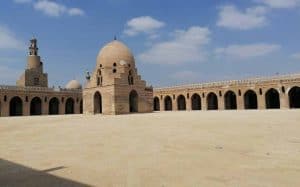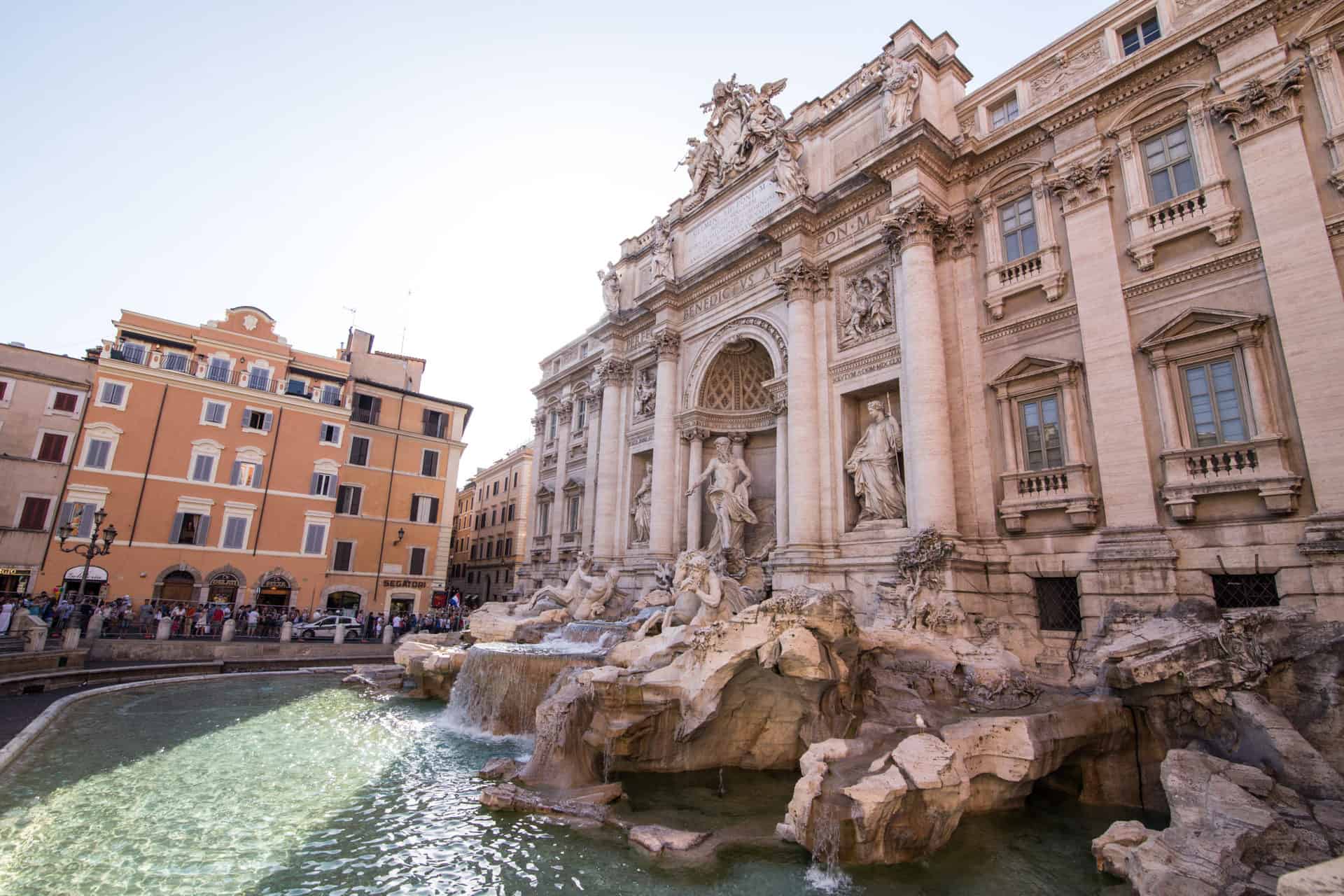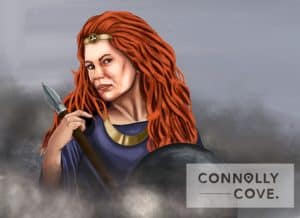Unveiling the Meaning of the Celtic Motherhood Knot

Updated On: May 07, 2024 by Maha Yassin
The Celts, a vast tapestry of cultures that flourished across Europe from the Iron Age to the Middle Ages, have left a legacy that resonates with us today. Their artistry, steeped in rich mythology and symbolism, has captivated imaginations for centuries. One particularly evocative symbol is the Celtic motherhood knot. Unlike some Celtic designs with a single, well-defined form, the motherhood knot exists in several variations, each embodying the powerful connection between a mother and her child. These intricate designs, often featuring interwoven hearts or drawing inspiration from the Triquetra (Trinity Knot), have become cherished icons for mothers and families across the globe. They are a timeless reminder of the enduring love and unwavering bond between parent and child.
In this article, we will learn more about the Celtic motherhood knot and its deep meaning in Celtic culture.
Unveiling the Celtic Motherhood Knot: A Celebration of Diversity

There isn’t a single, universally recognised “Celtic motherhood knot.” Unlike some well-defined Celtic symbols, the motherhood knot embraces a beautiful diversity of forms, each iteration a unique expression of the powerful connection between a mother and her child. This section delves into the most common variations and explores the additional elements that can enrich this meaningful symbol.
The Heart of the Design: Triquetra and Intertwined Hearts
The most frequently encountered Celtic motherhood knot features a design based on the Triquetra, also known as the Trinity Knot. This iconic symbol, a circle interwoven with a continuously flowing three-point design, represents eternity and interconnectedness. Within this framework, the motherhood knot incorporates interwoven hearts, symbolising a mother’s deep, nurturing love for her child. The interlacing of the hearts and the Triquetra creates a visual representation of the mother and child’s bond woven together, forever linked in a timeless dance of love and support.
Variations in Design: Celebrating Individuality
While the hearts intertwined with the Triquetra form the most popular version, you might encounter other variations of the Celtic motherhood knot, each adding a unique layer of meaning. Here are some examples:
- Number of Hearts: Some designs may include a different number of hearts. Three hearts could represent a mother with three children or perhaps symbolise the universal love of motherhood encompassing all children.
- Additional Elements: Additional elements like flowers or spirals might be integrated into the knotwork. Flowers symbolise growth, new beginnings, and the blossoming bond between mother and child. Spirals, a recurring motif in Celtic art, can represent life’s cyclical nature, motherhood’s journey, or even the endless flow of love.
- Personalisation: Some artists may personalise the knotwork by incorporating birthstones, initials, or other meaningful elements, making it a truly unique treasure for a mother.
These variations showcase the beauty of the Celtic motherhood knot – its ability to adapt and evolve while retaining its core message of love, connection, and the enduring bond between mother and child.
Delving Deeper: Meaning and Significance of the Celtic Motherhood Knot

The Celtic motherhood knot transcends its beautiful visual form to hold deep meaning and significance. It is a powerful symbol that resonates with mothers and families across cultures. Let’s explore the core message and symbolism woven into this intricate design.
The Enduring Bond Between Mother and Child
At its heart, the Celtic motherhood knot celebrates the everlasting bond between a mother and her child. The interwoven hearts and the continuous flow of the Triquetra represent the deep, unwavering love that transcends time and circumstance. This bond is depicted as strong and enduring, much like the intricate knotwork itself.
The Celtic belief system placed a high value on family and community. Mothers were the cornerstone of the family unit, fostering love, nurturing growth, and passing down traditions. The motherhood knot beautifully reflects this by emphasising the interconnectedness and lifelong nature of the mother-child relationship. It represents the invisible threads that bind mother and child, a constant source of strength and security throughout life’s journey.
Celtic Mythology and the Motherhood Bond
Delving deeper into Celtic mythology, we find further connections between the motherhood knot and the importance placed on mothers. Figures like Brigid, the Celtic goddess of fertility, poetry, and healing, embodied motherhood’s nurturing and protective qualities. The motherhood knot can be seen as a tribute to these powerful goddesses and the reverence Celtic cultures held for mothers.
The Power of the Triquetra
The Triquetra, a foundational element in many Celtic motherhood knots, adds meaning to the symbol. Its three interconnected points have been interpreted in various ways, often representing:
- The Three Stages of Motherhood: Maiden, Mother, and Crone. This interpretation reflects the journey of motherhood throughout a woman’s life. The maiden represents the potential for motherhood, the mother embodies the nurturing and caretaking aspects, and the crone symbolises the wisdom and guidance a mother offers as her children grow.
- The Spiritual Connection: Mind, Body, and Spirit. This interpretation acknowledges the multifaceted nature of motherhood and the nurturing a mother provides on all levels. A mother cares for her child’s physical well-being, emotional development, and spiritual growth. The Celts believed in a holistic approach to life, and the motherhood knot reflects this by acknowledging the interconnectedness of these aspects.
- The Eternal Link: Past, Present, and Future. This interpretation symbolises the enduring bond that transcends time and continues to grow throughout life. With no beginning or end, the knotwork reinforces the idea that the connection between mother and child is ever-present and ever-evolving. The past experiences they share, the love that binds them in the present, and the future they face together are all woven into the intricate design.
These interpretations highlight the depth and complexity of the mother-child relationship, acknowledging its emotional, spiritual, and everlasting nature. The Triquetra adds a timeless quality to the Celtic motherhood knot, reminding us that this bond is constantly present throughout life’s journey.
The Symbol of Nurturing Love

The interwoven hearts are a central element in most Celtic motherhood knots. They represent the deep, unconditional love a mother holds for her child. This love is depicted as a constant source of nourishment and support, guiding and protecting the child on their life’s journey.
In Celtic cultures, mothers were highly respected for their nurturing role within the family and society. They were seen as the providers of emotional support, the teachers of life skills, and the protectors of their children’s well-being. The motherhood knot beautifully captures this essence, portraying a mother’s love as a powerful force that sustains and empowers her child. It visualises the unwavering love that shapes a child’s life and provides a safe harbour throughout their journey.
The Celtic motherhood knot, therefore, serves as a beautiful and meaningful symbol that transcends cultures and generations. It celebrates the enduring bond between mother and child, the power of nurturing love, and the interconnectedness of life’s journey. It is a timeless reminder of a mother’s profound impact on her child’s life, a sentiment that resonates deeply with mothers and families worldwide.
The Celtic Motherhood Knot in the Modern World: A Symbol Enduring
The Celtic motherhood knot has transcended its ancient origins to hold significant meaning in the modern world. While its core message of maternal love remains unchanged, its form and use have evolved to reflect contemporary sensibilities.
A Cherished Keepsake: Worn with Pride
The Celtic motherhood knot is a popular motif in jewellery, adorning pendants, necklaces, and bracelets. These pieces are cherished keepsakes, often gifted by mothers to daughters or given to celebrate motherhood. The intricate design becomes a tangible reminder of the powerful bond between mother and child, a symbol worn close to the heart. Modern jewellers have expanded on the traditional design, incorporating gemstones like birthstones to personalise the piece for the recipient. Delicate silver or gold knotwork might be paired with sparkling diamonds or warm sapphires, creating a timeless and elegant expression of love.
This trend extends beyond mothers and daughters. Fathers, sons, and partners can also gift the Celtic motherhood knot to celebrate the mothers in their lives. The symbol transcends traditional family structures, acknowledging the multifaceted nature of motherhood and the love mothers provide in various forms.
A Celebration of Motherhood: Beyond the Home

The Celtic motherhood knot is also used in decorative items like wall hangings, framed art, and baby blankets. These depictions are a beautiful way to celebrate motherhood within the home, creating a warm and loving atmosphere. Modern artists have incorporated the knotwork into a wider range of home decor, from throw pillows and tapestries to ceramic mugs and picture frames. The versatility of the symbol allows for personal expression, with some artists adding floral motifs or Celtic knotwork borders to enhance the design further.
The motherhood knot also enters baby nurseries and children’s rooms. Mobile decorations featuring the symbol or crib sheets with a subtle knotwork pattern can create a serene and loving environment for a newborn. These depictions are a constant reminder of the mother’s love that surrounds and protects the child.
A Connection to Celtic Heritage: A Modern Exploration
For those with Celtic ancestry, the motherhood knot connects to their heritage. Wearing or displaying the symbol can be a way to celebrate their Celtic roots and the values associated with their family history. Modern interest in genealogy and ancestral connections has fueled a renewed appreciation for Celtic symbols. The motherhood knot, focusing on family and enduring bonds, resonates with this trend.
Online communities and social media groups dedicated to Celtic heritage often feature discussions and artwork centred around the motherhood knot. These platforms allow individuals to explore the symbol’s meaning, share family stories, and connect with others with Celtic ancestry. The motherhood knot becomes a tangible link to the past, honouring the traditions and values passed down through generations.
A Universal Symbol of Love: Beyond Borders
Beyond its Celtic origins, the motherhood knot resonates with people of all backgrounds. The universal message of love, connection, and nurturing transcends cultural boundaries. The symbol can be a meaningful gift for mothers of all walks of life, representing the unique and powerful bond between mother and child.
Modern adoption practices and blended families have broadened the definition of motherhood. The Celtic motherhood knot, emphasising love and connection rather than biological ties resonates with these changing family dynamics. The symbol can represent the love between adoptive mothers and their children, foster mothers and their charges, or even grandmothers who play a significant role in raising their grandchildren.
Therefore, the Celtic motherhood knot holds significant meaning in the modern world. It serves as a cherished keepsake, a celebration of motherhood in all its forms, a connection to heritage, and, ultimately, a universal symbol of love that transcends cultures and generations.
The Celtic Motherhood Knot: An Enduring Legacy of Love
The Celtic motherhood knot is more than just a decorative design; it is a powerful symbol that resonates deeply with mothers and families across the globe. Its enduring legacy lies in its ability to capture the essence of motherhood – the unwavering love, the interconnectedness, and the everlasting bond between mother and child.
The motherhood knot has transcended time and cultures, from ancient Celtic origins to contemporary interpretations. It serves as a cherished keepsake, a celebration of motherhood in all its forms, and a connection to ancestral heritage. Ultimately, it is a universal symbol of love, a beautiful reminder of mothers’ profound impact on their children’s lives.
The Celtic motherhood knot’s enduring popularity is a testament to the enduring power of love and the importance of family. As this symbol continues to be passed down through generations, it serves as a reminder of the values that truly matter: love, connection, and the unwavering bond between mother and child.
FAQs
Is there a specific colour associated with the Celtic motherhood knot?
No, there isn’t a single defined color for the Celtic motherhood knot. Colours like white (purity, innocence), green (growth, nurturing), silver (strength, love), and gold (devotion) hold symbolic meaning, but the choice is personal.
Can the Celtic motherhood knot be used to represent a father-child bond?
The Celtic motherhood knot traditionally represents the mother-child bond, but there’s no reason it can’t symbolise a strong father-child bond, either. The core message of love and connection transcends gender.
Are there other Celtic symbols related to motherhood?
Yes, there are other Celtic symbols related to motherhood. Brigid’s Cross, a four-armed cross, represents Brigid, the goddess of fertility, poetry, healing, and motherhood. Sheela na Gig, a controversial image of childbirth, is seen as a celebration of motherhood.
Where can I find authentic Celtic motherhood knot jewellery?
Finding truly “authentic” Celtic motherhood knot jewellery can be difficult. Look for shops specialising in Celtic crafts, online marketplaces with handcrafted Celtic jewellery, or websites of reputable jewellers known for Celtic-inspired designs.
Can I get a tattoo of the Celtic motherhood knot?
Absolutely! The Celtic motherhood knot is a popular tattoo choice, especially among mothers. Find a reputable tattoo artist who can create a design you love and ensure proper placement and execution.






